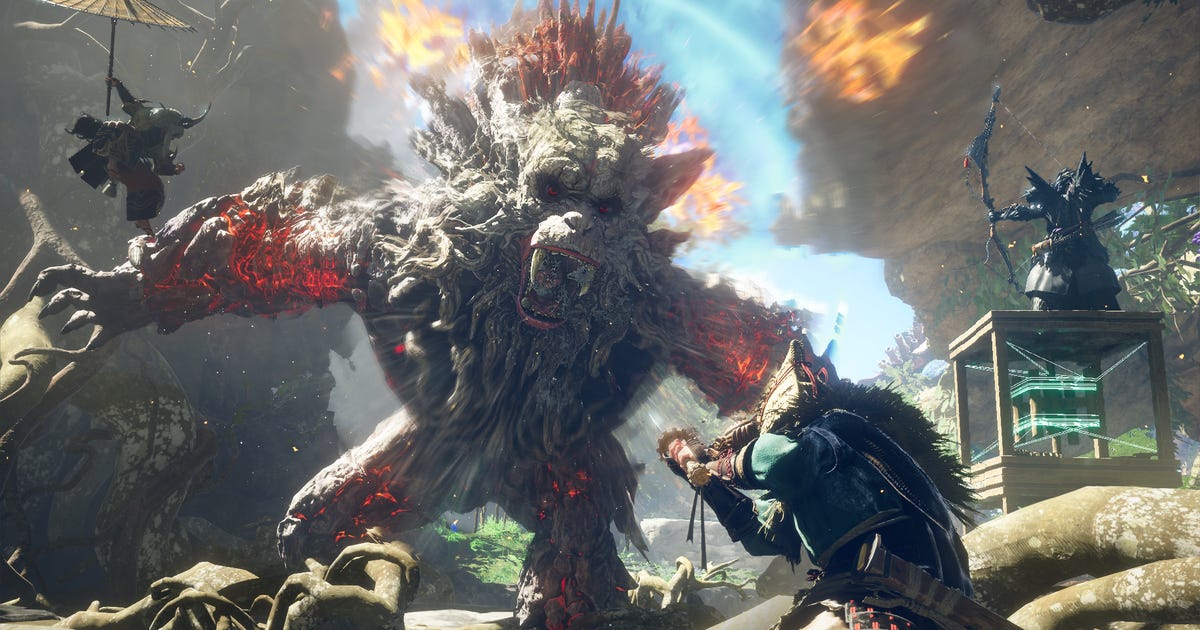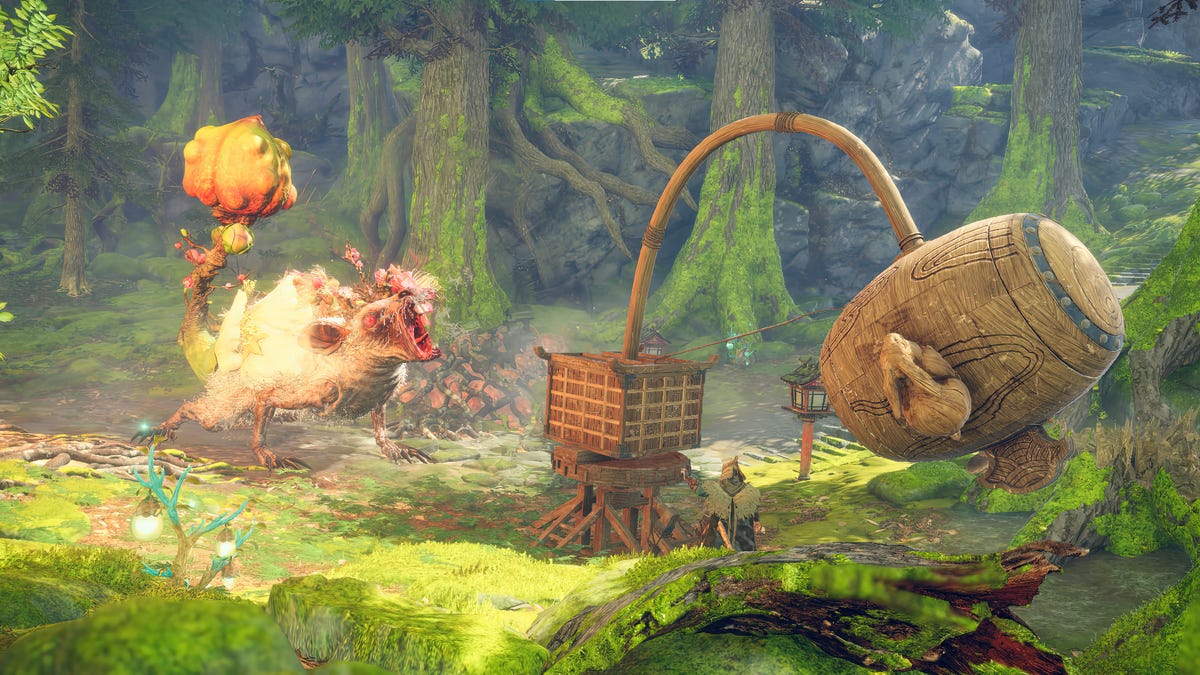
Wild Hearts, developed by Koei Tecmo’s Omega Force and published by EA, tries its best to take the monster-hunting genre crown from Capcom’s long-running franchise, Monster Hunter. The problem is it copies Capcom’s homework a bit too much.
Despite fast action and a stacked variety of enemies, Wild Hearts is a carbon copy so blatant that fans of the Capcom series may find it hard to ignore. Those new to the genre, however, should find battling giant monsters to be a fun, if somewhat shallow, experience.
Hunting down monsters
In Wild Hearts, you play the role of a nameless hunter in Azuma, a world that closely resembles feudal Japan. You’ll seek out giant monsters, known as Kemonos, upgrade equipment and complete quests for characters. At your disposal is a stockpile of weapons with unique moves, such as the outlandish Bladed Wagasa, an umbrella-looking weapon that makes the hunter into a deadly Mary Poppins as they float while slicing away at monsters.
Weapon options are similar to Monster Hunter, but the toolsets feel slightly different. Called Karakuri, players can create different objects that aid in traversal but can also be used in battle. The first Karakuri available to players is a box that can be used to reach higher ledges or as a platform to deal extra damage when doing plunging attacks. Later, players will learn to combine six of these boxes together to create a bulwark, a fortified wall that will stop a charging monster, causing them to fall on their back leaving them open to attacks. The Karakuri is essentially a Swiss Army knife-like tool that unlocks more options as players progress.

The Karakuri can create some whacky tools like this contraption.
EA
Combat in Wild Hearts feels more frantic than in Monster Hunter, but there’s a sluggishness to the controls. Attacks, healing, dodging, using Karakuri and other actions come with a hint of input lag, leading to some frustration while playing.
Enemies range from smaller monsters that are only a few sizes larger than the hunter to giant behemoths that tower over the player. Fights come in phases. When an enemy’s health is taken down enough, the monster will roar and escape to another part of the map. Players will have to find them again and start the second phase, which has the monsters unleashing new and more powerful attacks making them far more dangerous.
This heart is too familiar
I can’t stress this enough: Wild Hearts plays so much like Monster Hunter. It’s almost distracting. And unfortunately, Wild Hearts copies some of the most monotonous parts of Monster Hunter wholesale.
Like in Monster Hunter, enemies have roars that indicate the start and end of a battle, which is a lame mechanic that shouldn’t have been copied. Then there’s the tedious and pointless action of the monster running away after losing a certain amount of health. There’s even the incorporation of a 30-second timer after hunting down quest-related monsters to take you back to camp instead of letting you continue to hunt other monsters or immediately start another quest.
The world of Azuma is split into islands where there is a variety of terrain, but only so many locations are actually intended for fighting. The rest allows you to gather items for crafting or healing, as well as provide a safe space to set up camp. This also feels exactly like Monster Hunter.
Even the tone of the game is similar. Wild Hearts’ feudal Japan setting isn’t that much different from Monster Hunter, although the latter is a bit more playful with its characters and setting.
Wild Hearts isn’t going to take the monster-hunting crown. Fans of the Capcom series won’t find much new to explore in the game, while those new to the genre will see the same notes repeated again and again. Who may enjoy Wild Hearts the most are those new to the genre and never had the experience of beating up on giant beasts with ridiculous weapons.
Wild Hearts launches on the PS5, Xbox Series X|S and PC for $70 on Feb. 17.
